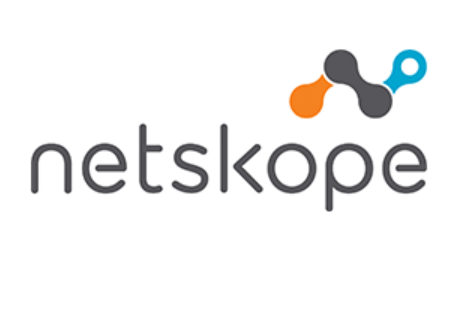Amphenol agreed to acquire CommScope’s mobile networks businesses for $2.1 billion in cash, subject to customary post-closing adjustments. The acquisition includes CommScope’s Outdoor Wireless Networks (OWN) segment and the Distributed Antenna Systems (DAS) business from CommScope’s Networking, Intelligent Cellular, and Security Solutions (NICS) segment. These businesses are projected to generate full-year 2024 sales of approximately $1.2 billion with EBITDA margins around 25%.
CommScope's Mobile Business offers a wide range of products and solutions, including:
- Antennas and active antennas: Designed for Base Stations (BS), Remote Radio Units (RRUs), and Massive MIMO applications.
- Active and passive DAS (Distributed Antenna System) components: For indoor and outdoor distributed antenna systems.
- Fiber and coaxial cables: For backhaul and fronthaul networks.
- Networking and switching products: For LTE and 5G networks, including baseband units, router switches, and network management systems.
- Small Cells: For indoor and outdoor small cell deployments.
- IoT solutions: For IoT connectivity and management.
In addition, CommScope's Mobile Business provides a range of services, including network planning, installation, commissioning, and maintenance/support. It's customers include:
- Mobile Network Operators (MNOs): such as Verizon, AT&T, T-Mobile, and Vodafone.
- Mobile Network Equipment Manufacturers (OEMs): such as Ericsson, Huawei, and Nokia.
- Tower Cos.: such as American Tower, Crown Castle, and SBA Communications.
Amphenol plans to finance the acquisition using a combination of cash on hand and debt. The deal is expected to be accretive to Amphenol’s Diluted Earnings Per Share in the first full year after closing, excluding acquisition-related costs. The transaction is anticipated to close in the first half of 2025, pending customary regulatory approvals and closing conditions.
Key Points:
- Acquisition Cost: $2.1 billion in cash.
- Business Segments: Outdoor Wireless Networks (OWN) and Distributed Antenna Systems (DAS).
- Financial Impact: Expected 2024 sales of $1.2 billion and EBITDA margins of 25%.
- Financing: Combination of cash on hand and debt.
- Closing Timeline: Expected in the first half of 2025.
- Earnings Impact: Accretive to Amphenol’s Diluted EPS in the first full year post-closing.
“We are excited by the prospect of adding CommScope’s mobile networks businesses and their approximately 4,000 talented employees to the Amphenol family,” said Amphenol President and Chief Executive Officer, R. Adam Norwitt. “CommScope provides mobile networks solutions, with advanced technologies in the areas of base station antennas and related interconnect solutions, as well as distributed antenna systems. In particular, we are encouraged that the businesses we are acquiring make up the former Andrew Corporation portfolio of products, a company with a rich history of innovation and technology leadership in the wireless industry. We look forward to supporting customers who are developing next-generation wireless networks around the world with these advanced solutions as well as our own existing complementary products. Finally, this acquisition further supports Amphenol’s long-term growth and balanced end market exposure across all areas of the electronics market.”
Over the years, CommScope's mobile business has grown through a series of strategic acquisitions over the yearss:
- Andrew Corporation (2011): CommScope acquired Andrew Corporation, a leading provider of wireless network infrastructure solutions, for $2.6 billion. This acquisition expanded CommScope's portfolio of products and solutions for wireless network operators.
- IBA GmbH (2013): CommScope acquired IBA GmbH, a German-based provider of passive wireless network infrastructure products, for an undisclosed amount. This acquisition strengthened CommScope's presence in the European market.
- RFMD (2015): CommScope acquired RFMD, a leading provider of radio frequency (RF) and microwave components, for $2.7 billion. This acquisition expanded CommScope's portfolio of RF and microwave products, which are used in wireless network infrastructure.
- Telxon Corporation (2015): CommScope acquired Telxon Corporation, a leading provider of wireless network infrastructure solutions, for an undisclosed amount. This acquisition expanded CommScope's portfolio of wireless network infrastructure products and solutions.
In addition to these acquisitions, CommScope has also invested in developing its own products and solutions for the mobile market, including:
- Small cells and femtocells: CommScope offers a range of small cell and femtocell products that enable wireless network operators to deploy dense networks and improve indoor coverage.
- Active antennas: CommScope's active antennas are used to amplify and direct wireless signals, improving network performance and efficiency.
- Microwave backhaul: CommScope's microwave backhaul solutions enable wireless network operators to transmit large amounts of data between cell sites, reducing latency and improving network performance.
Here are some key metrics from CommScope's recent annual reports:
Revenue:
2020: $1.35 billion ( Mobile segment revenue accounted for approximately 33% of the company's total revenue)
2019: $1.33 billion (Mobile segment revenue accounted for approximately 35% of the company's total revenue)
2018: $1.23 billion (Mobile segment revenue accounted for approximately 38% of the company's total revenue)
Operating Profit
2020: $274 million (Mobile segment operating profit accounted for approximately 20% of the company's total operating profit)
2019: $284 million (Mobile segment operating profit accounted for approximately 21% of the company's total operating profit)
2018: $275 million (Mobile segment operating profit accounted for approximately 22% of the company's total operating profit)














